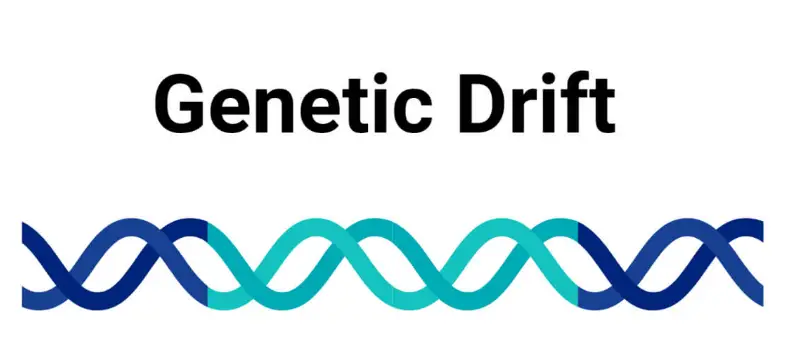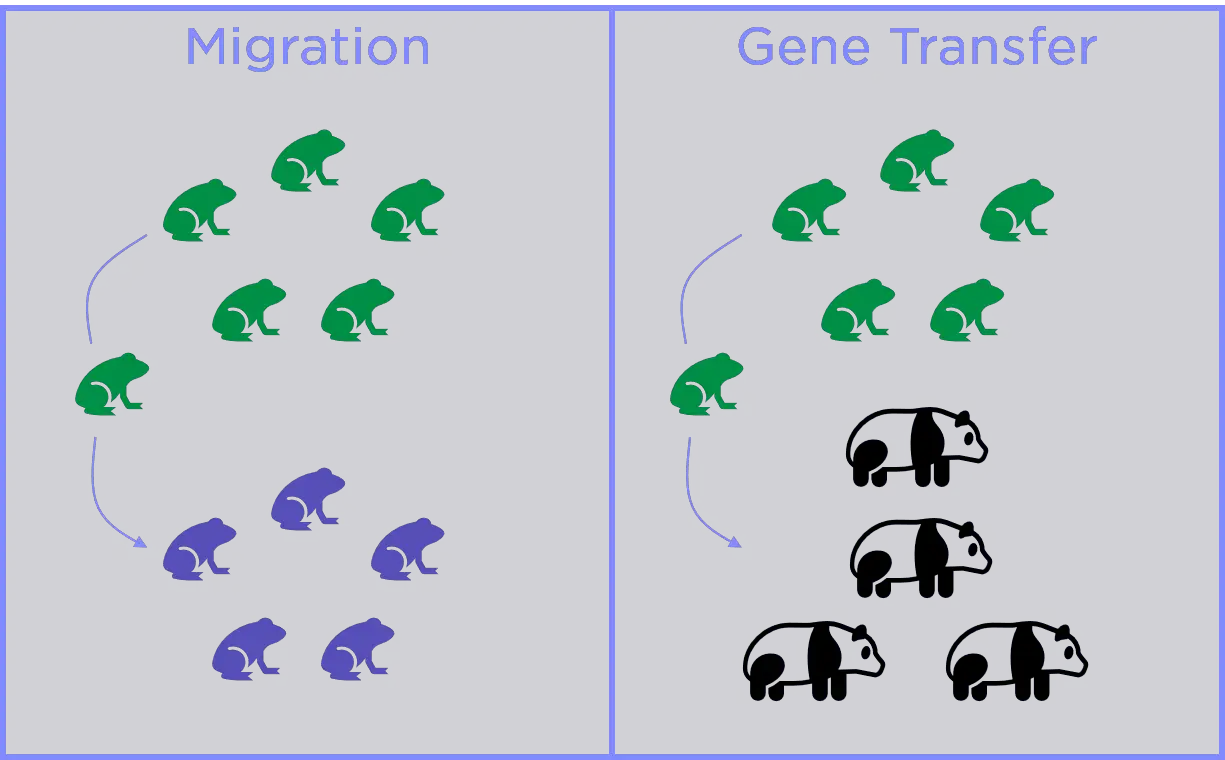Genetics plays a pivotal role in understanding the diversity and evolution of species across the globe. Two fundamental mechanisms responsible for changes in genetic compositions of populations are gene migration and genetic drift. These processes influence evolutionary trajectories but operate under different ecological and population dynamics conditions.
Gene migration, or gene flow, occurs when organisms or their gametes move from one population to another, mixing genetic material. On the other hand, genetic drift involves random changes in the frequency of alleles within a population’s gene pool, particularly in small populations, leading to a decrease in genetic variation over time. Together, these mechanisms shape the genetic structure of populations, influencing evolutionary outcomes.
While gene migration adds genetic variation to a population by introducing new alleles, genetic drift can result in the loss of alleles through random sampling effects. The balance between these forces can significantly affect a population’s genetic health and its ability to adapt to environmental changes.

Gene Migration
Definition and Basics
Gene migration, also known as gene flow, is the process where genetic material is exchanged between populations or species. This occurs when individuals from one population migrate to another and breed, effectively mixing their genetic material with the new population. Gene migration is a natural part of evolutionary processes, ensuring genetic diversity and the spread of genetic traits across geographical boundaries.
Causes and Mechanisms
Several factors can cause gene migration, including:
- Animal Migration: Animals often move from one habitat to another, either seasonally or as a part of their life cycle, carrying their genetic material with them.
- Plant Dispersal: Plants can disperse their seeds through various mechanisms such as wind, water, or animals, leading to the spread of their genetic material.
- Human Influence: Human activities, such as the relocation of species for agriculture or landscaping, can also cause gene migration.
The mechanisms of gene migration are mainly facilitated through:
- Breeding: When individuals from different populations mate, their offspring inherit a mix of genetic traits.
- Hybridization: In some cases, closely related species can interbreed, creating hybrids with genetic material from both species.
Effects on Population Genetics
Gene migration has several significant effects on the genetics of populations:
- Increased Genetic Diversity: By introducing new alleles into a population, gene migration can increase genetic diversity, which is crucial for adaptation and survival.
- Reduced Genetic Drift: Gene flow can counteract the effects of genetic drift, which often occurs in isolated populations and can lead to inbreeding and reduced genetic diversity.
- Homogenization of Populations: Extensive gene flow between populations can lead to genetic homogeneity, reducing the genetic differences between populations.
Genetic Drift
Defining Genetic Drift
Genetic drift refers to the change in the frequency of existing alleles in a population due to random sampling of organisms. This mechanism of evolution occurs independently of natural selection, primarily affecting small populations where random events can have a larger impact on the population’s genetic composition.
Causes and Examples
Genetic drift can be caused by:
- Population Bottlenecks: Events that drastically reduce the size of a population can lead to bottlenecks, where only a small number of individuals survive, carrying only a fraction of the genetic diversity once present.
- Founder Effects: When a new colony is started by a few members of the original population, the new population may have reduced genetic variation compared to the original.
Examples of genetic drift include:
- Northern Elephant Seals: Their population was once hunted to near extinction, resulting in a population bottleneck. The genetic diversity of this species is much lower than in a historically larger, unstressed population.
- Amish Community of Pennsylvania: Due to the small size of the founding population and subsequent isolation, the community has a higher prevalence of certain genetic disorders.
Impact on Genetic Variability
The impact of genetic drift on genetic variability includes:
- Reduction in Allele Varieties: Genetic drift can reduce the number of different alleles in a population as alleles can be lost from the gene pool entirely.
- Increased Genetic Differences Between Populations: Over time, different populations of the same species can become genetically distinct due to independent drift events.
Comparing Migration and Drift
Key Similarities
Both gene migration and genetic drift:
- Affect Allele Frequencies: Each mechanism influences how alleles are distributed within populations over generations.
- Are Mechanisms of Evolution: They are fundamental processes that drive the genetic evolution of populations.
Fundamental Differences
While they are both evolutionary mechanisms, gene migration and genetic drift differ fundamentally in:
- Impact on Genetic Variation: Gene migration increases genetic variation within a population by introducing new alleles, whereas genetic drift typically reduces genetic variation by randomly increasing or decreasing allele frequencies.
- Scale and Predictability: Gene migration is often influenced by predictable factors, such as migration patterns or human activities, whereas genetic drift is highly stochastic and more pronounced in small populations.
Case Studies
Migration in Animal Populations
One of the most vivid examples of gene migration can be observed in the annual migration patterns of the monarch butterfly. Every year, millions of monarch butterflies migrate from North America to central Mexico for the winter. This journey not only represents an impressive physical feat but also a significant exchange of genetic material across vast geographic areas. The mating that occurs before, during, and after the migration ensures a mix of genetic traits from different regional populations, enhancing the species’ genetic diversity and adaptability.
Another key example involves the great wildebeest migration in Africa. Approximately 1.5 million wildebeest traverse the Serengeti ecosystem in a predictable pattern, driven by the search for fresh grazing and water. This movement allows for the intermingling of genetic material between what might otherwise be isolated groups, promoting genetic diversity and strengthening the resilience of the population.
Drift in Isolated Communities
Genetic drift has profound effects in isolated human populations, one of which can be seen in the Icelandic population. Due to its historical isolation and small initial population of settlers, the Icelandic gene pool exhibits unique characteristics that have arisen due to genetic drift. Studies have shown that certain genetic diseases are more prevalent in this population, a direct consequence of the founder effect and subsequent genetic drift over generations.
Another poignant case study is the native populations on the Andaman Islands in India. These tribes have remained isolated from the mainland for thousands of years, resulting in a high degree of genetic drift. This isolation has led to a genetic makeup that is markedly different from any other human population, with unique genetic traits that have evolved due to the small population size and geographic isolation.
Implications in Evolution
Role in Species Adaptation
Gene migration and genetic drift play critical roles in the adaptation of species. Gene migration can introduce new alleles into a population, providing genetic variation needed for adaptation to changing environmental conditions. For example, plants that extend their range into colder climates may acquire cold-resistance genes through gene flow from populations already adapted to such conditions.
Conversely, genetic drift can lead to the random loss or fixation of alleles, which might lead to new evolutionary paths in small, isolated populations. For example, the dwarfism often observed in island populations of large mammals (such as the extinct dwarf elephants of Mediterranean islands) is attributed to genetic drift. These adaptations, whether beneficial or not, can define the survival and reproductive success of species in their respective environments.
Consequences for Conservation Efforts
Understanding gene migration and genetic drift is essential for effective conservation strategies. For species endangered by genetic uniformity and inbreeding, promoting gene flow from genetically diverse populations can enhance genetic health and adaptive capacity. Conservationists often use this strategy by creating wildlife corridors that facilitate animal movements between fragmented habitats.
Frequently Asked Questions
What is Gene Migration?
Gene migration, or gene flow, refers to the transfer of genetic material between populations. It often results from the movement of individuals or their reproductive cells, introducing new genetic material and increasing genetic diversity within the population.
How Does Genetic Drift Occur?
Genetic drift occurs through random fluctuations in allele frequencies, often in small populations. Over generations, these random changes can significantly affect the genetic diversity and composition of a population.
Why is Genetic Drift Important?
Genetic drift is crucial as it can lead to significant genetic changes within a population, potentially leading to new species over time or the loss of genetic traits, affecting the population’s survival and adaptability.
Can Gene Migration Affect Evolution?
Yes, gene migration can profoundly impact evolution by introducing new genes into a population. This genetic infusion can lead to increased diversity and adaptability, enabling populations to better respond to environmental changes.
Conclusion
The dynamics of gene migration and genetic drift are central to evolutionary biology, offering insights into the development and sustainability of biodiversity. Understanding these processes helps explain how species adapt to ecological changes and the role of randomness in evolutionary outcomes.
By examining these genetic mechanisms, researchers can better predict changes in biodiversity and develop strategies for conservation. The interplay between gene migration and genetic drift highlights the complexity of evolutionary biology and the intricate balance necessary for species survival.

